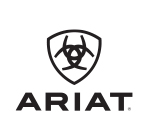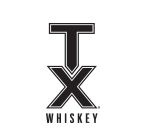The Art
The four defining elements of the American West drive Los Caballos, a monumental public art piece by William Matthews that commands the south entrance of the new Dickies Arena in Fort Worth. Fifty feet above ground level, the twelve-foot-tall, ninety-two-foot-long triptych features a painting of a herd of horses in full gallop across an open western landscape, flanked on either side by heroic-sized bas-relief figures of a cowboy and a Comanche, each mounted horseback, facing one another. Taking advantage of the year-round sunlight afforded by its southern exposure, the landscape sparkles in brilliant glass mosaic; the riders are cast in bronze, their features delineated by a soft, green patina.
The land is first, the backdrop and constant presence within which the West exists. A vast and arid sweep of wind and weather with more horizon and sky than even the open sea, it is place that can only be witnessed in motion. Amid the waving grasses and migrating animals, the viewer at rest, or afoot, is lost, swallowed-up in the enormity of space. Only when one is moving, only when one is part of the river of time that shapes the Western landscape, only then can the West be seen. It is in this way that the horse first set our tribes free to be Westerners.
It was the horse that made the Comanche, the first peoples to realize its full potential, and in that realization, who remade the horse as well. When the reservations claimed the Lords of the Plains, the cowboys who followed the cattle trails and began their uneasy settlement on ranches, were also made by the horse, and like the Comanche before them, put their own stamp on los caballos. The late poet Buck Ramsey defined a cowboy as anyone – anyone – who is at the right place, the right time, and horseback. A logical extension follows: All who ride and ride well belong to a tribe of the cult of skill, Comanche and cowboy alike.
The Process
The last week of April, 2018, William Matthews invited me to his Denver studio to be part of a small team brainstorming ideas for this ambitious public art project. I joined a roster that already numbered Buckeye Blake—a Texas-based visual artist—and John Grant—a Denver-based public art consultant. Along with Buckeye, I was there to provide historical and cultural context for the theme of the art piece, which we all took to be the connection between human, horse, and landscape. While John kept us on schedule and focused on the practical aspects of such a massive undertaking, and while Willy and Buckeye worked out ideas with sketches, I wrote, first free-verse pieces, and then sonnets.
By expanding the viewer’s curiosity into emotion, art expresses what is otherwise inexpressible. Moreover—and of equal importance—art does not favor the artist over the viewer, but instead transforms each, perhaps in different ways, but transformation nonetheless. That is the power of process, which allowed us to come to the critical realization that this public art piece had to be the visual equivalent of a thing-poem, which is a poem that becomes the thing about which it is written. The finished work would need to be self-evident to the casual and first-time viewer but with the complexity to reward repeated study—an instant appreciation of the vastness of the Western landscape, of the strength and prowess of the Comanche, of the skill of the cowboy, of the moving freedom granted by the horse, but carrying within that instant appreciation the deep history of all those elements.
Both to reflect the timeless architecture of the building and to itself become timeless, the work would also need to be fabricated with time-tested, old-world materials. Hand-colored glass mosaic was chosen to render Matthews’s painting. Using 570 different colors, 28 artisans at the celebrated Mosaica Venecianos in Cuernavaca, Mexico, run by three sisters, worked for 9 months laying out the piece on a 65’-long table. Four installers traveled with the completed mosaic to place it on the building, supervised by John Grant and Matthews. For the bas-relief pieces, Buckeye Blake—himself a member of the Cherokee Nation—fabricated sculptures from Matthews’s drawings, first in 30” maquettes, then in the full 12’ height. Both figures were cast and patinated in Fort Collins, CO, at Tim Joseph Studios before being shipped to the site, hoisted up by cranes and installed, again under the watchful eyes of both Grant and Matthews.
The Horse and the Comanche
When the Spanish arrived in the mid-sixteenth century to the buffalo nation of the Great Plains, they brought with them a utilitarian and less dramatic beast. It was a homecoming of sorts; Eohippus, the ancestor of the modern horse, evolved on the Great Plains some forty million years ago. During the Ice Age its descendants spread to Asia, a fortunate turn of events for the species, as its American relations were among the mammals that became extinct in the great die-off at the end of the Pleistocene. The horse continued to evolve outside the Americas, and to spread westward. The Moors brought them to Spain; the Spanish brought them back to their primeval homeland.
Horses were not simply livestock. They were a technology, a way of doing things, and the Spanish, knowing that they had conquered the fiercest of los índios with the superiority of their other technologies, kept close rein on them all—in their reckoning, an Amerindian with a horse being as dangerous as an Amerindian with a gun—and were able to succeed in their monopoly for some two centuries. Horses were occasionally stolen, to be sure, and found their own way into the wilderness from time to time. But many of them were geldings, and in any case, the few horses so liberated from the Spaniards were mostly taken as food, not as transportation, so that prior to 1650, there are no historical accounts of mounted Amerindians in the Southwest.
The Spanish had found subduing the Puebloans a straight-forward business of guns and priests. Not so the enemies of the pueblos. The Apache had practiced warfare against them long before the arrival of the Spanish, but the horses brought up from New Spain made the pueblos even more attractive targets as the raiders realized that stolen Spanish mounts could be used for warfare as well as for food. There soon developed a vicious cycle of Apache raids on the New Mexican pueblos, raids for horses made more successful by the very horses themselves, horses which allowed the raiders to easily escape the pursuit of the Spanish defenders.
The inability of the Spanish to protect them against the Apaches was too much for the Puebloans. They revolted in 1680 driving out their former masters from New Spain. The Spanish survivors—some accounts listing their number at no more than two thousand—fled in fear and disarray, deserting their homes and fields and abandoning thousands of head of domestic livestock. The sheep and cattle were useful to the Puebloans; the horses were not, and those that were not driven away by Apache raiders simply escaped into the mountains and plains of New Mexico to become the beginnings of the first wild mustang herds.
The Spanish were not able to reassert their rule until 1690. But by then the gate had been left open too long; in what is surely one of the most rapid and widespread diffusions of technology in human history, the horse became the common denominator of the American West. By 1700, all Texas tribes had horses and horse know-how, and within another fifty years, the horse culture had become part of native life as far north as the Canadian Rockies.
For twelve thousand years before the return of the horse, indigenous peoples had been traversing the Plains and hunting its game. They went afoot all that time, though for much of it using dog-pulled travois to transport their goods, and always ranging great distances during seasonal treks between permanent homelands and the hunting grounds of spring and fall. A natural offshoot of these migrations was the trade that sprung up among different peoples as they encountered one another along the principal trails and at the few watered sites where camp could be made. Yet trade is more than commerce. It is also, and more importantly, the exchange of ideas: the spread of religions, the sharing of customs and fashions and arts, the transmission of technologies. Goods—the stuff of commerce—make small, cumulative changes in the lives of individuals, but new ideas sweep through entire cultures, profoundly and rapidly transforming the world through which they pass. On the Great Plains, the ideas of greatest impact have been those most intimately associated with its defining characteristics of immensity and aridity. Horse-technology was such an idea. It upset the balance of things in the West. Not as it was practiced by its first owners, the Spanish, for the horse only made them more efficient conquerors; they had come already mounted, and their nature remained the same. Not even as it was employed by the first native peoples to acquire it, the Puebloans and even the Apaches, because while the horse altered their transportation, once transported the new riders returned to the ground for their work, be it farming, hunting, or waging war. But on the Plains, the horse changed the world.
It is not unreasonable to say that the horse made the Nermernuh, the name by which the Comanche called themselves. Shoshoneans, most closely related to the Utes, they lived afoot as hunter-gatherers in the eastern mountains in what is today south-central Wyoming before acquiring the horse at the end of the seventeenth century. They were not the first to get it, but they were the first to fully understand and exploit horse-technology. Unimposing on foot, they were graceful, daring, and impossibly brave on horseback. They were among the best horse breeders and so important as suppliers of horses that Comanche became the language of horse commerce all across the midsection of the continent. Insofar as horses were wealth, they were the richest of the rich. And whereas other peoples rode horses, the Comanche lived out their lives horseback—every man, woman, and child. They had few equals in horse-technology, and certainly no superiors.
They cast their lot entirely with the horse. Now completely nomadic, the Comanche raised no crops, made no pottery, wove no baskets, and built no permanent homes. Instead, they took advantage of those who did, moving south to the land most blessed by horse and buffalo, over the Llano Estacado, down through Texas and into Mexico, taking it all for their own. In this, they had certain advantages beyond their horsemanship. For one thing, though they were not an organized nation, and no gathering of Comanche ever made war on another of their own kind, something that can be said about no other Amerindian group.
Moreover, the times of the year that the Comanche found most desirable for raiding and hunting—the spring and fall—were the very times that their adversaries were tied to their villages and pueblos with the sowing and harvesting of crops. The Apache, who had ruled the Southern Plains for three centuries, were swept from it in less than half a hundred years. By 1770, less than a century after acquiring horse-technology, Athanase de Mézières reported that “The Comanche are scattered from the great Missouri River to the frontier presidios of New Spain. They are a people so numerous and so haughty that when asked their number, they make no difficulty in comparing it to that of the stars.”
Yet the profound changes made by the Comanche’s adoption of the horse were far greater than that of the replacement of one people by another. For a century and a half, the Comanche created a barrier between frontiers progressing from two directions, the Spanish and later Mexicans from the west and south, and French and later Americans from the east. The Spanish, and later the Mexicans, had a place in their social and political order for los índios. It was not a good one; but they were a part of the nation nonetheless. And it was a system that worked with the rooted tribes, thought never with the nomadic and warlike Comanche, over whom neither Spaniard nor Mexican ever prevailed.
On the contrary, the remaining European Americans—British, French, or American—were never clear in their philosophy about the native peoples, or in their sentiments toward them. Independent bands of peoples of the same tongue were considered as nations by the whites, and were entertained by treaties and agreements, setting out boundaries and obligations that neither side were ever able to meet, if ever they intended to do so. Whites in settled regions saw the noble savage, whites on the frontier demonized them akin to devils, and the traders and preachers saw opportunity for converts and customers. In the end, the confusion resulted in a simple but extreme policy: elimination.
The Comanche were an issue for the European thrusts into the West. They were nomads, having no interest in farming or the building of permanent villages, and having an intensely personal religion that made them ill-suited to the conversion by the missionaries. As the richest of peoples—in their own view of horses and buffalo ranges as wealth—they were envious of no one. The successes of the Comanche as raiders and warriors left them disdainful of the settlers, confident rather than fearful, aloof rather than awe-struck, they eschewed alcohol and for the most part avoided the effects of the European diseases that destroyed other native peoples.
They made only two alliances. The New Mexicans, independently of their national government, maintained an uneasy but century-long truce based upon trade, by welcoming the Comanche and their wealth of buffalo and horses to the fairs at Santa Fe and Taos, and through the itinerant merchants—the comancheros—who traveled deep into the territory of los índios with their carts laden with goods to exchange for hides and meat. Indeed, the comancheros precipitated the second by arranging a dramatic council between Afraid-Of-Water, a Comanche chief, and his Kiowa counterpart, Wolf-Lying-Down. Meeting in the summer of 1806 at the Comanche camp in the most southerly of the Llano canyons, by fall the two had struck an alliance so enduring that it has yet to be broken. Insulated on the west by peace with the New Mexicans and having struck an alliance with the fierce Kiowa, the Comanche were free to extend their range to the south and east as it suited them.
By the close of the Civil War, the Southern Plains were ruled by the Comanche, who hunted its buffalo, traded with the comancheros, and, seemingly at will, ranged deep into Mexico and across the Texas frontier. Nevertheless, pressures were building that would mean the end of Comanchería. Westward expansion by the Americans, pent-up during the war years, exploded; the Great Plains increasingly became as much a destination as a place through which to travel enroute to Oregon or Utah or California. The Comanche were now a problem for Western settlements and the nation responded, sending its army, and, to greater effect, its cavalry.
The source of half the Comanche wealth was under pressure, too. From the first invasion of Apachean peoples in the middle of the fifteenth century, the fragile balance between man and buffalo—between hunter and prey had begun to change. The employment of the horse dramatically changed that balance. Mounted hunters were better hunters, and with better hunting, hunter populations grew, in an ever-increasing spiral. Moreover, mounted hunters were also better suppliers to the traders in buffalo hides. Many scholars believe that native peoples—increased in number, with improved technologies and greater cultural dependence upon the buffalo—would have, on their own, brought the bison to extinction. It had, after all, happened before in far grander fashion at the end of the Ice Age. This time, however, they would have help, indeed, so much help that the role of native peoples in the decline of the buffalo, and other species, has been largely overlooked. In the mid-nineteenth century, native hunters were joined and then supplanted by American commercial hunters. These men were motivated by a world market for the hides—the leather being preferable for the belts driving the machinery of the Industrial Revolution—and armed with long-range rifles that allowed them to easily defeat the defenses of an animal with few natural predators. With the expanding rail system and ocean-going steamships, their bounty was rapidly distributed, which only fueled more demand. The buffalo slaughter was on.
By the time that Ranald Mackenzie and his Fourth Cavalry were set against the last of the Comanche, the fierce and stubborn Quahadi band, whose home range was the Llano Estacado and whose leader was the brilliant Quanah Parker, the economics of buffalo eradication were taking their toll. Mackenzie, who never defeated Quanah’s warriors in battle, was able to capture fourteen hundred Comanche horses and mules in the Palo Duro Canyon in the fall of 1874, and rather than pursue the Quahadi, instead drove the livestock twenty miles south to Tule Canyon and had them shot. Without the buffalo, and without the horse, the wealthy Comanche were destitute, and desperate. The following June, Quanah led the last remaining band of the Lords of the Plains into the reservation at Fort Sill, Indian Territory, making room for the next horseback tribe, the American cowboy.
The Horse and the Cowboy
Cattle are the work of people. In the great flowering of humankind that began at the end of the last ice age—the migration of peoples over the continents, the first cultivations of plants, the first domestications of animals—a few tribes scattered across the heart of the Old World became herders of auroch, a species of wild oxen. Our forebears used them as beasts of burden, drank their milk and ate their meat, employed their hide and horn and bone. Sometime during the past ten thousand years we drove them to extinction, not by killing them off, but by breeding them into something else, something we call cattle.
Though New World tribes had begun domesticating plants and animals as early as had Old World peoples, they lacked any tractable large beasts, so until Columbus brought a few head of criollo cattle to Santo Domingo in 1493, there were no beeves in the Americas. But cattle went wherever the Spanish went, and by 1690, criollos were in Texas. The Spanish never had more than a tenuous hold on the northern realm of their New World lands, a grip further weakened by the various native tribes’ acquisition of the horse after the Pueblo Revolt of 1680. Almost immediately, pressure from mounted Amerinds—especially Comanche and Kiowa—resulted in the abandonment of large numbers of those criollo cattle. They took to the wild, and to Texas; mean, athletic, and wily, they flourished in the untamed brush and timber lands.
Americans and other foreigners began immigrating to Texas early in the nineteenth century, bringing with them other cattle breeds. Similar misfortunes befell these new settlers, and soon new cattle blood was mixed with the wild Spanish, resulting in a distinctive new breed that packed more meat and more horn and grew more range-y and more colorful, but without, it should be noted, growing a single bit more tame. By the middle of the nineteenth century, they were known as Texas cattle; today we call them longhorns.
Every frontier is a paradox, a place of riches and a place of poverty, a place of optimism and a place of fear. The kingdom of the individual, it is a heaven of untapped natural resources, of unregulated opportunity, of unlimited freedom. The kingdom of the individual, it is the limbo of the common weal and the province of anarchy. Texas was such a place for over three centuries, from Cabeza de Vaca’s inadvertent exploration of 1535 to Quanah Parker’s surrender in 1875. There were three main factors. From the start, Texas was neglected by the capitols of the various governments aiming to settle it, each of which lacked either the money or the motivation to develop their distant frontier. Second, none of those governments were up to the task of defeating the Comanche. The first two were brought to crisis in the third factor, the Civil War, which reduced Texas to both poverty and anarchy.
All throughout the war the wild cattle herds grew, by natural means but also through escape and abandonment as the frontier fell back under pressure from Comanche raids and as able-bodied men were lost to Confederate conscription. By the time of Lee’s surrender, Texas was awash in unbranded cattle, a natural resource that would lead the way to economic recovery. Manufacturing and agriculture suffered from shortages of transportation, capital, and labor. The restoration of investor confidence, the rebuilding of the state’s railroads, the conversion from home-consumption to cash-crop farming—all these would take decades. But there was a pent-up demand for beef in the nation beyond her borders. Moreover, there was no need to wait for markets to come to Texas for cattle presented a commodity that could not only transport itself but—having grazed all the way up the trail—arrive in better condition than when the herd set out. Not to mention that the cow country was fitted with the drovers who knew how to move them.
With no waiting on capital, no waiting on the laying of new track, no shortage of able-bodied and capable hands, droving was the perfect business for the times. Costing no more than two dollars a head to drive to Kansas or Colorado—substantially less than by rail, had there been rails over which to ship them—and worth twice or better at market than in their home cow country, cattle provided an almost instant infusion of cash. A hip-pocket enterprise that required little or no personal investment, the cattle-trailing industry grew up overnight. Though it would only last another three decades, which was time enough to jump-start the Texas economy and to spawn a second, more enduring business, cattle-ranching. The drovers’ era would create another thing, too, the cowboy culture.
Before the cattle drives, those who tended the beeves were known as cow men, their work cow-hunting. In use at least since late in the 18th Century, cowboy was an epithet, the employment of which was most often grounds for fisticuffs. But while the first trail bosses—men like Burnett, Chisum, and Goodnight—always called their hired help cow hands, by the 1880s the hands themselves had embraced the old pejorative, turning it into a badge of honor and evidence of membership in an elite tribe, one born not of blood kinship but of choice, born not of fate but of skill. Just as being horseback was essential to what it meant to be Comanche, so it was with the cowboy. The man afoot was a laborer, but mounted, a thing inseparable from the American West.
As with the Comanche, horse technology created the cowboy. Horsemanship—in skill, knowledge, and ability—made the cowboy marketable. Living horseback also infused the rider’s spirit with a sense of fully belonging to the natural world, subject to the artificial world of bosses and owners only in the superficial sense, a spirit and attitude that could be mistaken for arrogance but which was nothing more than a strong mixture of confidence that was coupled with a constitutional need for freedom. An ethos, and a myth, soon grew up around the cowboy, both of which just as soon became enduring symbols of the American West.













